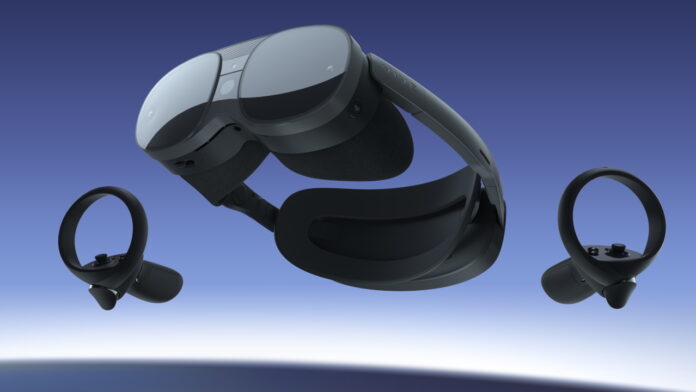HTC’s new standalone VR headset is poised to compete with the Meta Quest Pro.
The Vive XR Elite is the company’s first attempt to bring a fully untethered VR/AR experience to consumers after its enterprise-focused Vive Focus 3 and video-glasses-style Vive Flow. It’s expensive (though cheaper than the Quest Pro), but it shows plenty of potential.
The Vive XR Elite is a standalone headset, similar to the Vive Focus 3. It provides a full virtual reality experience with six-degrees-of-freedom (6DOF) motion tracking for both the headset itself and the included motion controllers, without the need for any wired connection.
It uses 90Hz LCDs to provide 4K resolution (approximately 2,000-by-2,000 pixels per eye) with a 110-degree field of view. It’s powered by the same Qualcomm XR2 processor as the Meta Quest 2, and features 12GB of RAM and 128GB of onboard storage.
The headset features a color passthrough camera like the Meta Quest Pro, enabling more immersive, full-color AR experiences compared with the black-and-white cameras of lower-end devices like the Quest 2. It also has a laser depth sensor for room scanning and incorporates built-in hand tracking so users can control the experience without motion controllers.
(Credit: HTC)
One of the most interesting aspects of the Vive XR Elite is its modular size, weight, and connectivity. It weighs just 625 grams, or about 1.5 pounds, with its battery attached. That makes it about 100 grams (3.5 ounces) heavier than the Quest 2 and 100 grams lighter than the Quest Pro. The headset can function without a battery, however, working as a tethered headset connected to any compatible computer, phone, or any device that can output video over USB-C. Removing the battery and switching the headband for the included glasses-like temples cuts the headset’s weight down to just 240 grams, half the weight of the Quest 2.
While the Vive XR Elite has a color camera like the Meta Quest Pro, it lacks the eye- and face-tracking features of Meta’s high-end headset. Instead, Vive will offer tracking accessories as optional purchases.
Recommended by Our Editors
The Vive XR Elite uses HTC’s own Viveport digital store and service, and Viveverse 3D environment. HTC says that its VR platform doesn’t harvest data, a significant contrast from Meta’s VR headsets and that company’s plans for the metaverse and its history of collecting and using customer data.
While the Vive XR Elite is intended for consumers, it’s still a very expensive headset. At $1,099, it comes in at the halfway mark between the Quest 2 and Quest Pro, and $100 more than the tethered Valve Index. Even without eye and face tracking, it seems to be a significant upgrade from the Quest 2 with its more advanced sensors and more modular design.
The HTC Vive XR Elite is currently available for pre-order, and ships later this year.
Get Our Best Stories!
Sign up for What’s New Now to get our top stories delivered to your inbox every morning.
This newsletter may contain advertising, deals, or affiliate links. Subscribing to a newsletter indicates your consent to our Terms of Use and Privacy Policy. You may unsubscribe from the newsletters at any time.
Hits: 0















